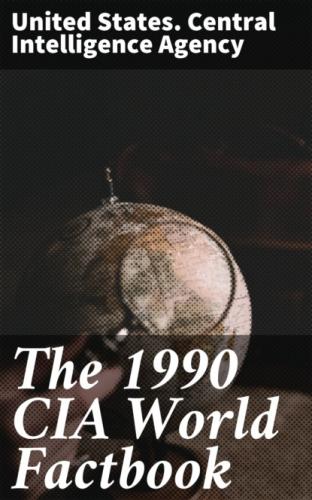Telecommunications: excellent service provided by modern media; 18.0 million telephones; stations—900 AM, 29 FM, 53 (1,400 repeaters) TV; 5 coaxial submarine cables; over 300 satellite earth stations operating in INTELSAT (including 4 Atlantic Ocean and 1 Pacific Ocean) and domestic systems
- Defense Forces
Branches: Mobile Command, Maritime Command, Air Command, Communications
Command, Canadian Forces Europe, Training Commands
Military manpower: males 15–49, 7,174,119; 6,251,492 fit for military service; 187,894 reach military age (17) annually
Defense expenditures: 2.0% of GDP, or $10 billion (1989 est.)
——————————————————————————
Country: Cape Verde
- Geography
Total area: 4,030 km2; land area: 4,030 km2
Comparative area: slightly larger than Rhode Island
Land boundaries: none
Coastline: 965 km
Maritime claims: (measured from claimed archipelagic baselines);
Extended economic zone: 200 nm;
Territorial sea: 12 nm
Climate: temperate; warm, dry, summer precipitation very erratic
Terrain: steep, rugged, rocky, volcanic
Natural resources: salt, basalt rock, pozzolana, limestone, kaolin, fish
Land use: 9% arable land; NEGL% permanent crops; 6% meadows and pastures;
NEGL% forest and woodland; 85% other; includes 1% irrigated
Environment: subject to prolonged droughts; harmattan wind can obscure visibility; volcanically and seismically active; deforestation; overgrazing
Note: strategic location 500 km from African coast near major north-south sea routes; important communications station; important sea and air refueling site
- People
Population: 374,984 (July 1990), growth rate 3.0% (1990)
Birth rate: 49 births/1,000 population (1990)
Death rate: 11 deaths/1,000 population (1990)
Net migration rate: - 8 migrants/1,000 population (1990)
Infant mortality rate: 65 deaths/1,000 live births (1990)
Life expectancy at birth: 59 years male, 63 years female (1990)
Total fertility rate: 6.7 children born/woman (1990)
Nationality: noun—Cape Verdean(s); adjective—Cape Verdean
Ethnic divisions: about 71% Creole (mulatto), 28% African, 1% European
Religion: Roman Catholicism fused with indigenous beliefs
Language: Portuguese and Crioulo, a blend of Portuguese and West African words
Literacy: 48% (1986)
Labor force: 102,000 (1985 est.); 57% agriculture (mostly subsistence), 29% services, 14% industry (1981); 51% of population of working age (1985)
Organized labor: Trade Unions of Cape Verde Unity Center (UNTC-CS) closely associated with ruling party
- Government
Long-form name: Republic of Cape Verde
Type: republic
Capital: Praia
Administrative divisions: 12 districts (concelhos, singular—concelho);
Boa Vista, Brava, Fogo, Maio, Paul, Praia, Ribeira Grande, Sal, Santa Catarina,
Sao Nicolau, Sao Vicente, Tarrafal; there may be 2 new districts named
Porto Novo and Santa Cruz
Independence: 5 July 1975 (from Portugal)
Constitution: 7 September 1980, amended 12 February 1981 and
December 1988
National holiday: Independence Day, 5 July (1975)
Executive branch: president, prime minister, deputy minister,
Council of Ministers (cabinet)
Legislative branch: unicameral National People's Assembly
(Assembleia Nacional Popular)
Judicial branch: Supreme Tribunal of Justice (Supremo Tribunal de
Justia)
Leaders:
Chief of State—President Aristides Maria PEREIRA (since 5 July 1975);
Head of Government—Prime Minister Pedro Verona Rodrigues PIRES, (since 5 July 1975); Deputy Minister Aguinaldo Liboa RAMOS (since NA February 1990)
Political parties and leaders: only party—African Party for Independence of Cape Verde (PAICV), Aristides Maria Pereira, secretary general
Suffrage: universal at age 15
Elections: President—last held 13 January 1986 (next to be held January 1991); results—President Aristides Maria Pereira (PAICV) was reelected without opposition;
National People's Assembly—last held 7 December 1985 (next to be held December 1990); results—PAICV is the only party; seats—(83 total) PAICV 83
Communists: a few Communists and some sympathizers
Member of: ACP, AfDB, ECA, ECOWAS, FAO, G-77, GATT (de facto), IBRD, ICAO,
IDA, IFAD, IFC, ILO, IMF, IMO, IPU, ITU, NAM, OAU, UN, UNESCO, UPU, WHO, WMO
Diplomatic representation: Ambassador Jose Luis FERNANDES LOPES; Chancery at 3415 Massachusetts Avenue NW, Washington DC 20007; telephone (202) 965–6820; there is a Cape Verdean Consulate General in Boston; US—Ambassador Terry McNAMARA; Embassy at Rua Hojl Ya Yenna 81, Praia (mailing address is C. P. 201, Praia); telephone p238o 614–363 or 253
Flag: two equal horizontal bands of yellow (top) and green with a vertical red band on the hoist side; in the upper portion of the red band is a black five-pointed star framed by two corn stalks and a yellow clam shell; uses the popular pan-African colors of Ethiopia; similar to the flag of Guinea-Bissau which is longer and has an unadorned black star centered in the red band
- Economy Overview: Cape Verde's low per capita GDP reflects a poor natural resource base, a 17-year drought, and a high birth rate. The economy is service oriented, with commerce, transport, and public services accounting for 60% of GDP during the period 1984–86. Although nearly 70% of the population lives in rural areas, agriculture's share of GDP is only 16%; the fishing and manufacturing sectors are 4% each. About 90% of food must be imported. The fishing potential of the islands is not fully exploited (the fish catch—mostly lobster and tuna—came to only 10,000 tons in 1985). Cape Verde annually runs a high trade deficit, financed by remittances from emigrants, cash grants, food aid, and foreign loans.
GDP: $158 million, per capita $494; real growth rate 6.1% (1987)
Inflation rate (consumer prices): 3.8% (1987)
Unemployment rate: 25% (1988)
Budget: revenues $80 million; expenditures $87 million, including capital expenditures of $45 million (1988 est.)
Exports: $8.9 million (f.o.b., 1987); commodities—fish, bananas, salt; partners—Portugal, Angola, Algeria, Belgium/Luxembourg, Italy
Imports: $124 million (c.i.f., 1987); commodities—petroleum, foodstuffs, consumer goods, industrial products; partners—Portugal, Netherlands, Spain, France, US, FRG
External debt: $140 million (December 1988)
Industrial production: growth rate 0% (1986 est.)
Electricity:
